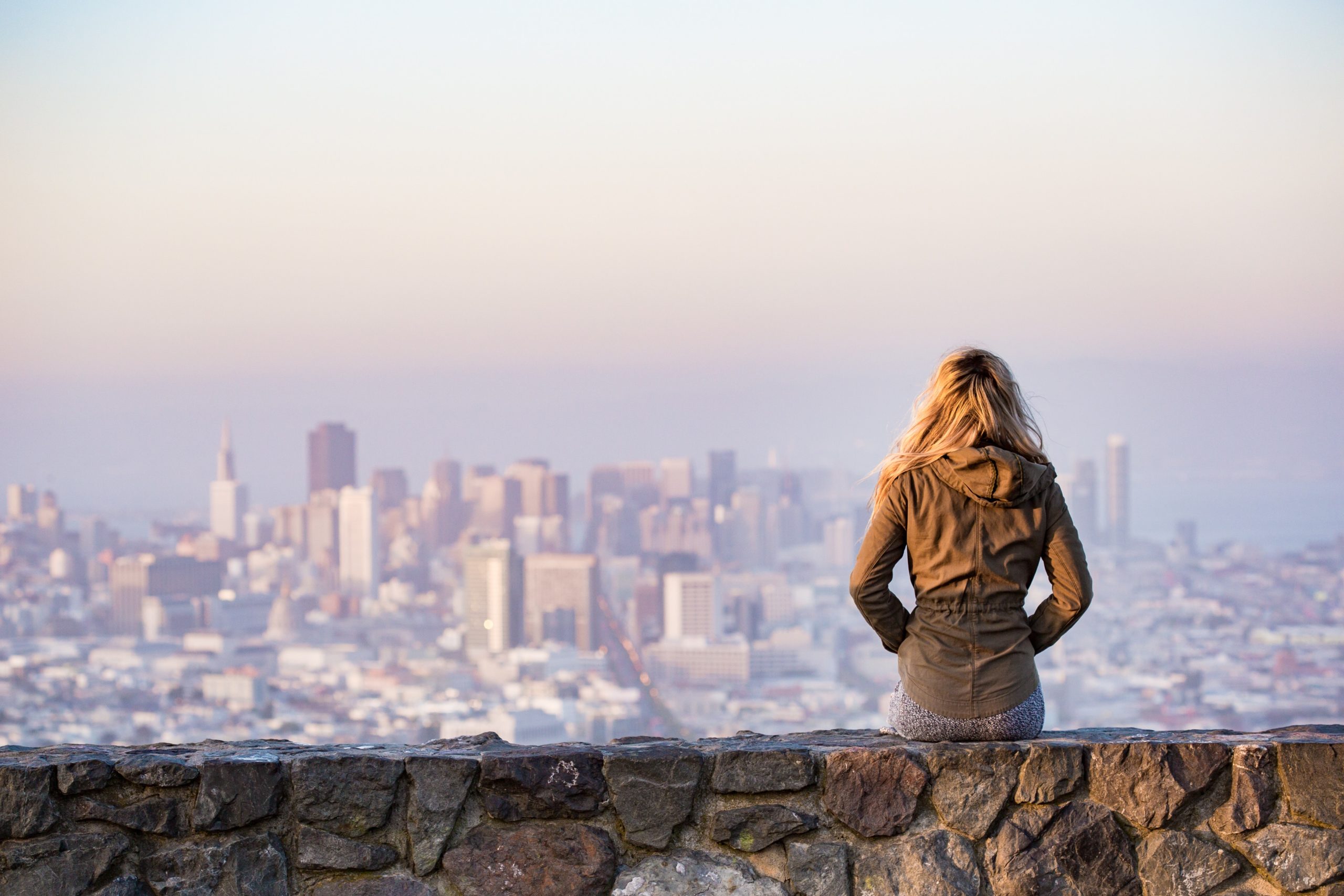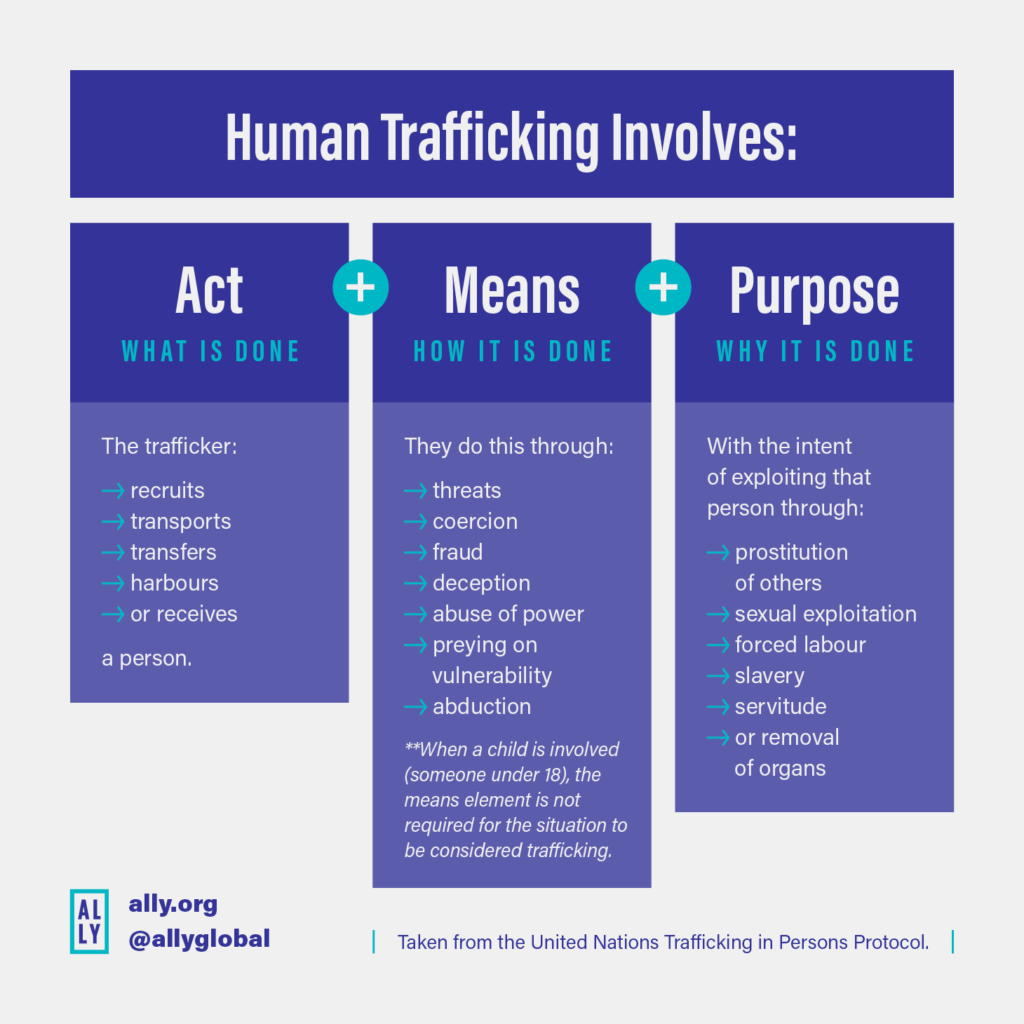
What is Human Trafficking?
Human trafficking is generally understood to refer to the process through which individuals are placed or maintained in an exploitative situation for economic gain.
- Trafficking can occur within a country or may involve movement across borders.
- It affects all regions and most countries.
- Women, men and children are trafficked for a range of purposes, including forced and exploitative labour in factories, farms and private households, sexual exploitation and forced marriage.
The UN Trafficking in Persons Protocol defines human trafficking as consisting of three elements: The Act (what is done), The Means (how it is done) and The Purpose (why it is done).

When a child is involved, the “means” element is not required.
The recruitment, transportation, transfer, harbouring or receipt of a child (The Act) for the purpose of exploitation is considered “trafficking in persons” even if it does not involve threat, use of force, or coercion.
It is not possible for victims of any age to “consent” to trafficking.
Whenever any of the ‘means’ of trafficking are used, the consent of the trafficked person becomes irrelevant. (As noted by the Trafficking Protocol: “once it is established that deception, coercion, force or other prohibited means were used, consent is irrelevant and cannot be used as a defence.”)

What is modern-day slavery?
Different countries use differing terminologies to describe modern forms of slavery. This includes how they describe slavery itself, but also other concepts such as human trafficking, forced labour, debt bondage, forced marriage, and the sale and exploitation of children.
“Modern slavery” is often used as an umbrella term that focuses attention on the commonalities across these concepts. Essentially, it refers to situations of exploitation that a person cannot refuse or leave because of threats, violence, coercion, deception, abuse of power, or deception.
Where does human trafficking take place?
Trafficking affects all regions and countries of the world—including Canada. It can occur within a country or may involve movement across borders. Increasingly, sexual exploitation is also taking place in the online space, through social media, gaming and messaging platforms.
You can prevent human trafficking and provide survivors with the safe housing, education and aftercare they need to heal.
Will you make a donation today to help survivors build healthy, independent futures?
Who might be vulnerable to trafficking?
While anyone may be susceptible to trafficking, members of vulnerable or marginalized groups are at the greatest risk. These include:
- Indigenous women and girls
- migrants and new immigrants
- LGBTQ+ persons
- persons living with disabilities
- children in the child welfare system
- at-risk youth
- those who are socially or economically disadvantaged
Who are traffickers?
Perpetrators of human trafficking span all racial, ethnic and gender demographics. Some use their privilege, wealth and power as a means of control, while others are subject to the same socio-economic disadvantages as their victims. Traffickers can be:
- business owners
- gang members
- powerful leaders
- intimate partners of the victim
- friends of the victim
- parents, guardians or relatives of the victim
Sources: United Nations Human Rights Fact Sheet No. 36 | Walk Free Global Slavery Index | United Nations Trafficking in Persons Protocol | United Nations Office on Drugs and Crime